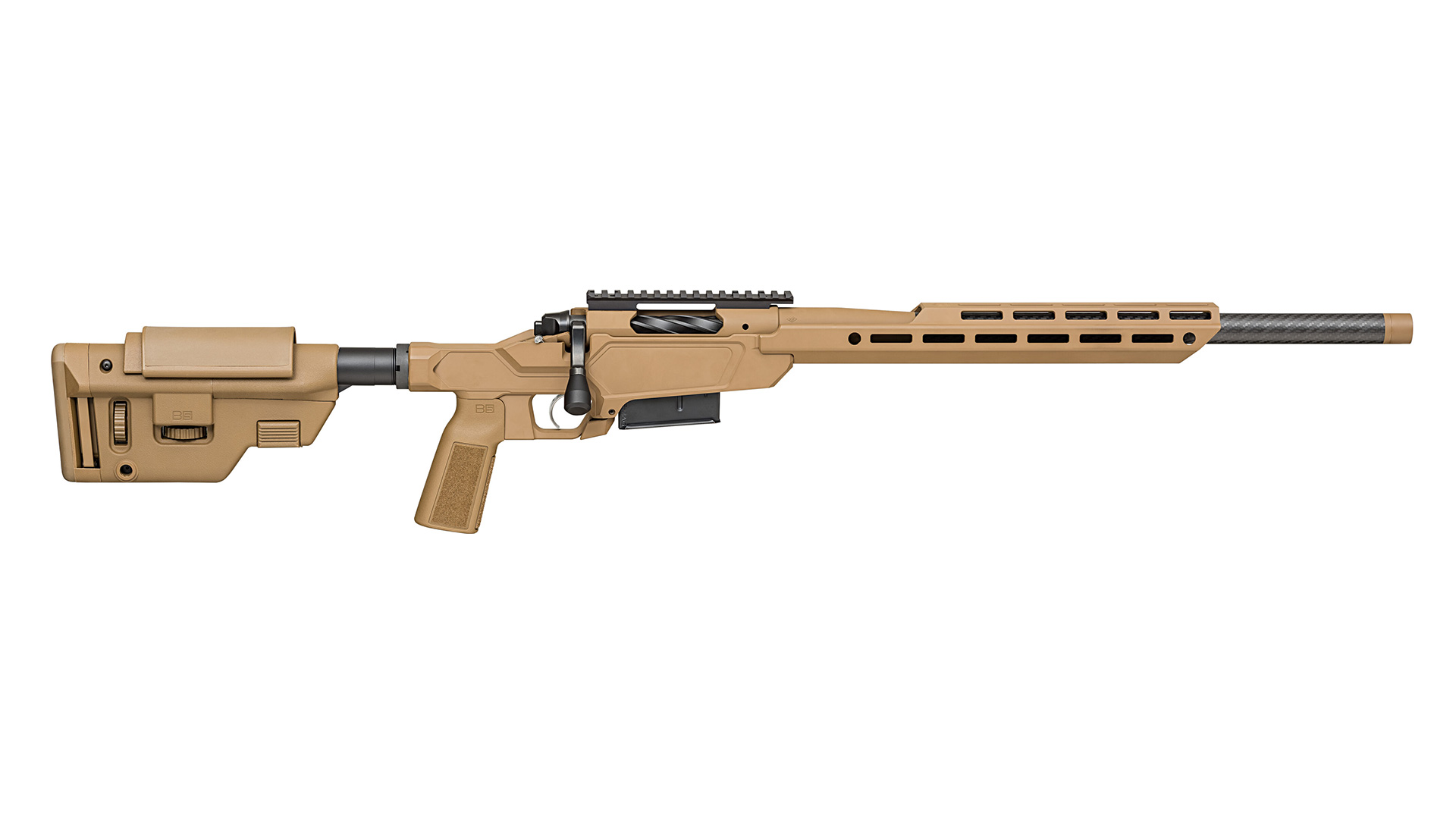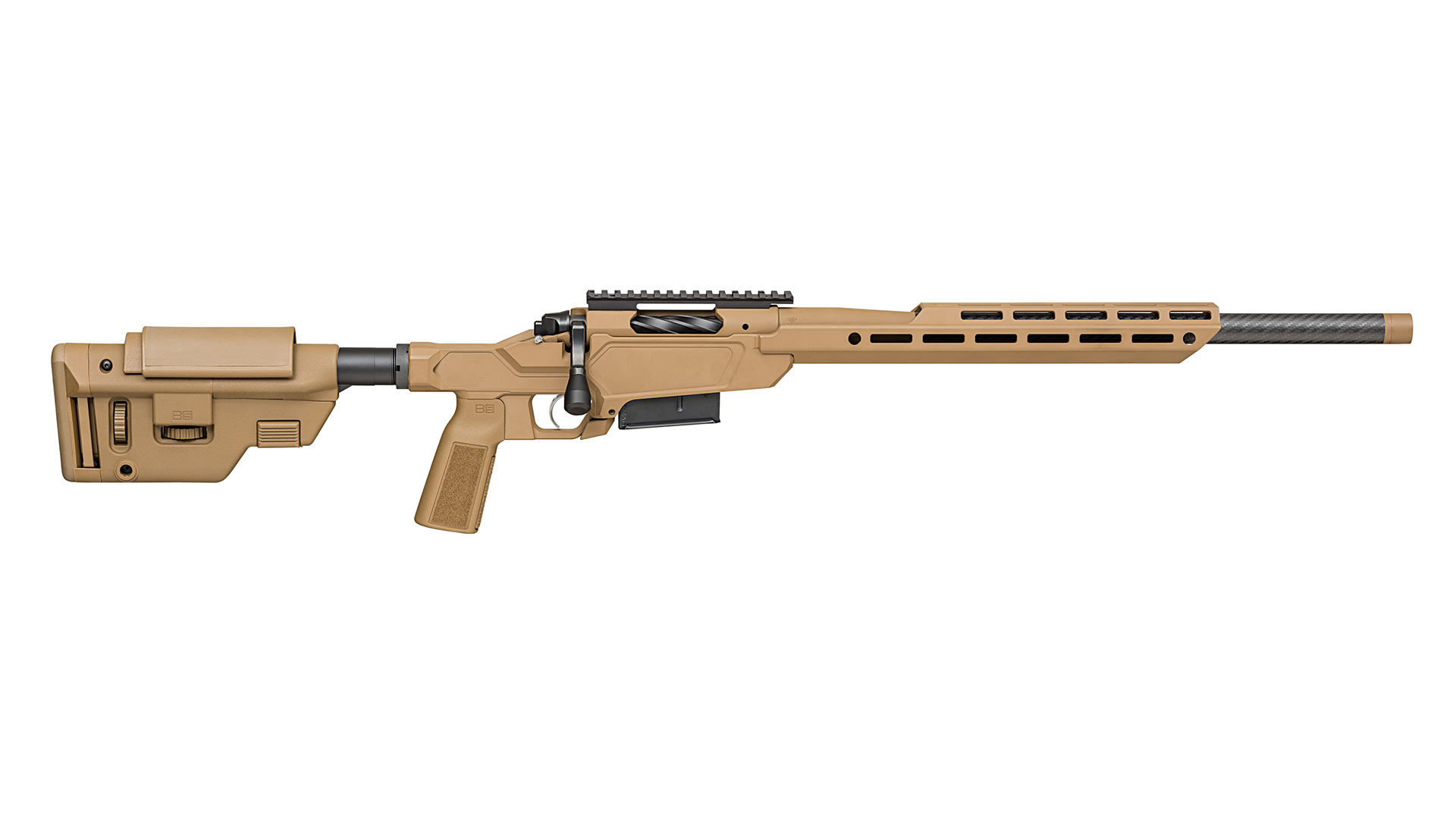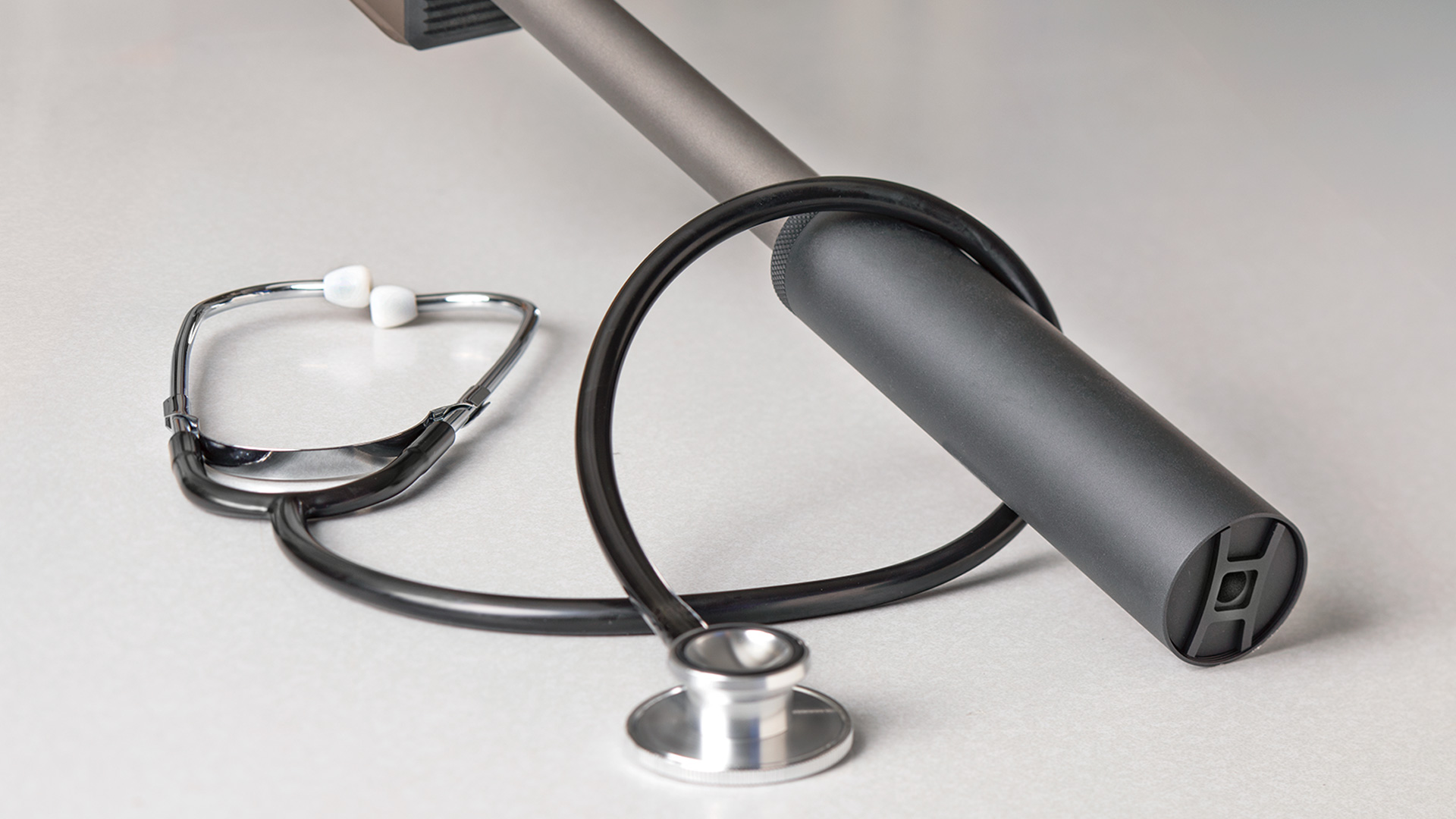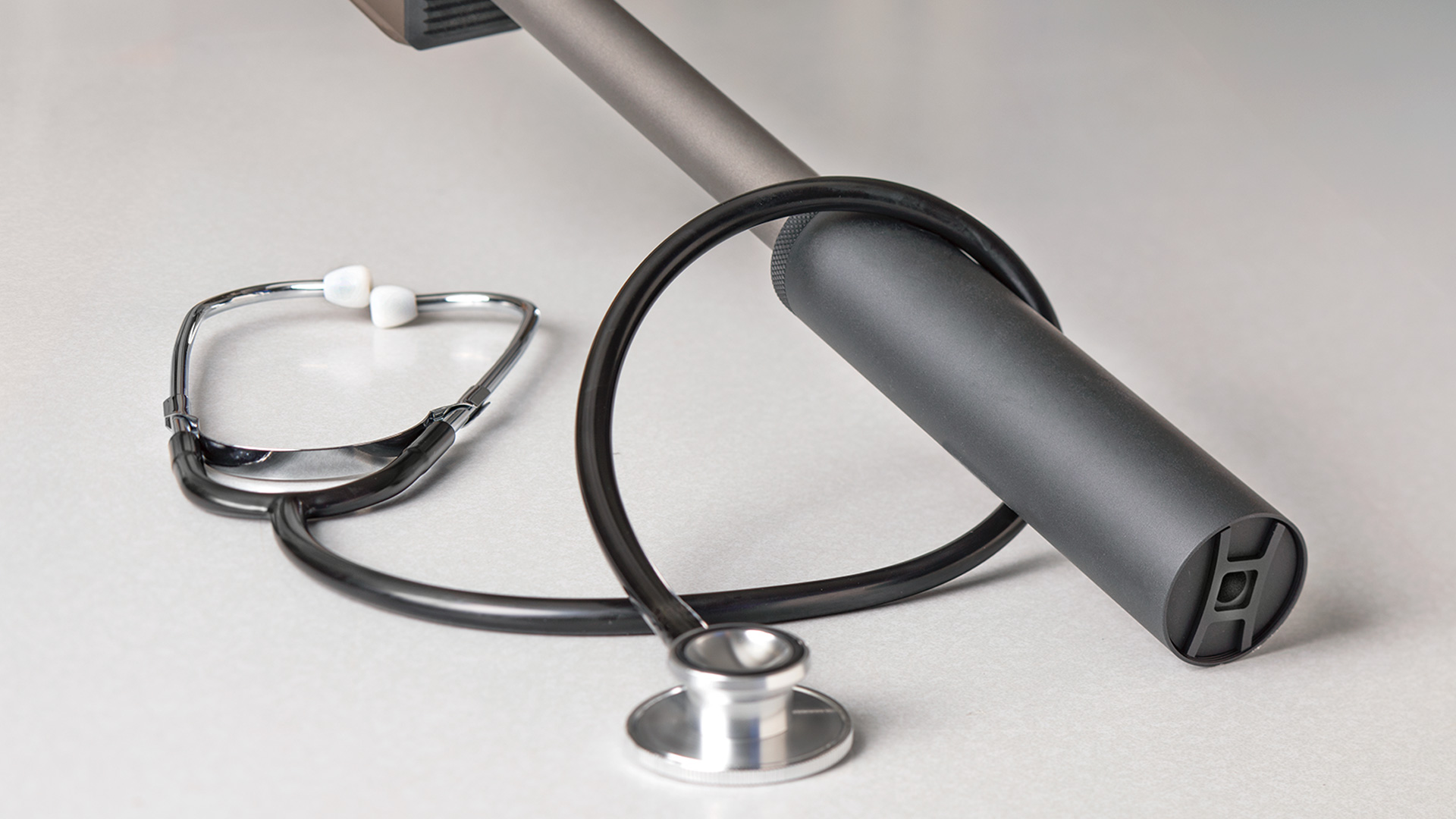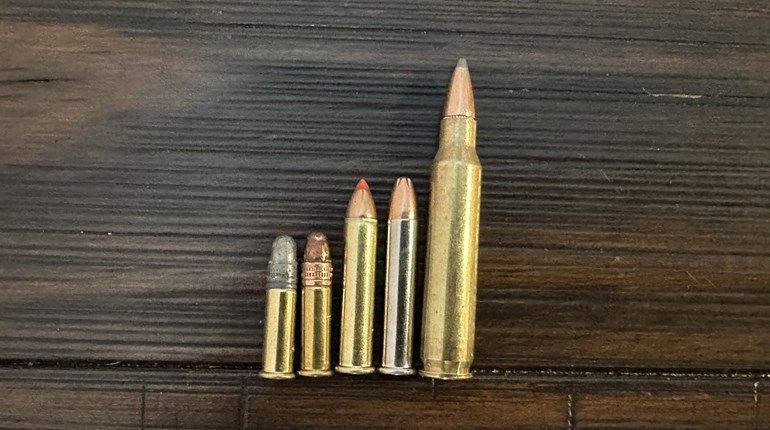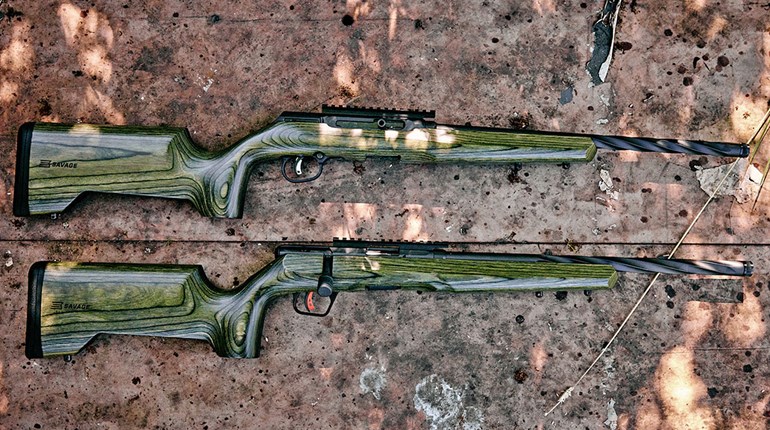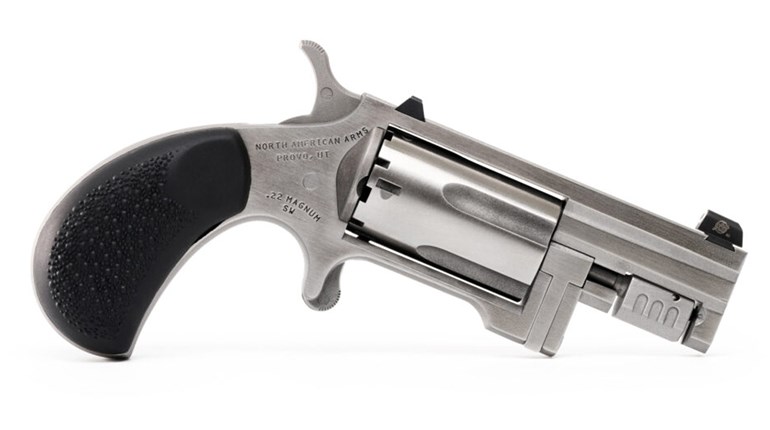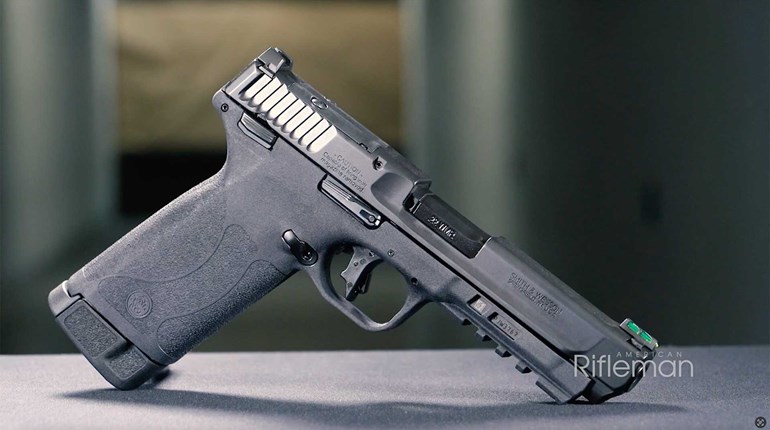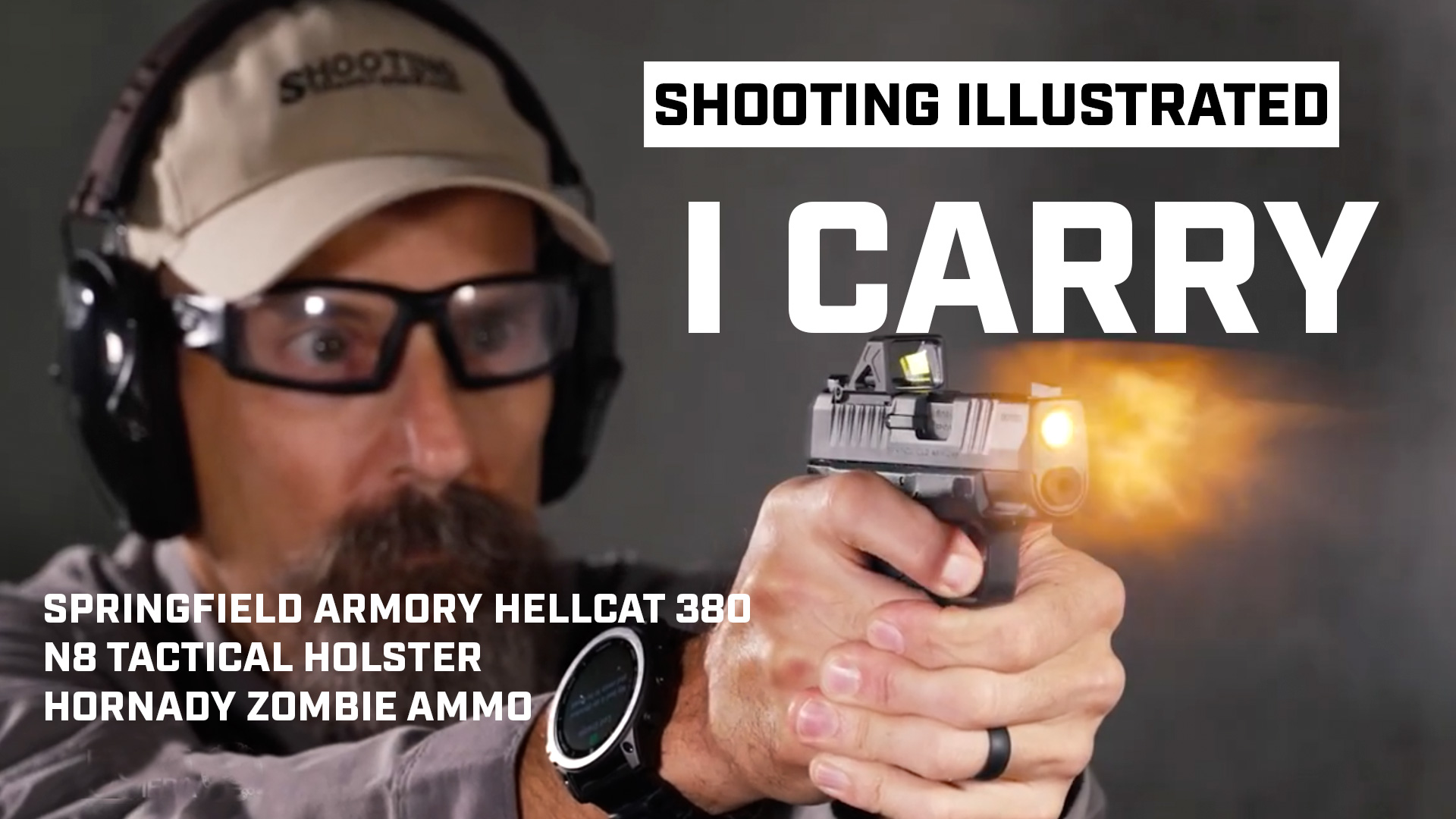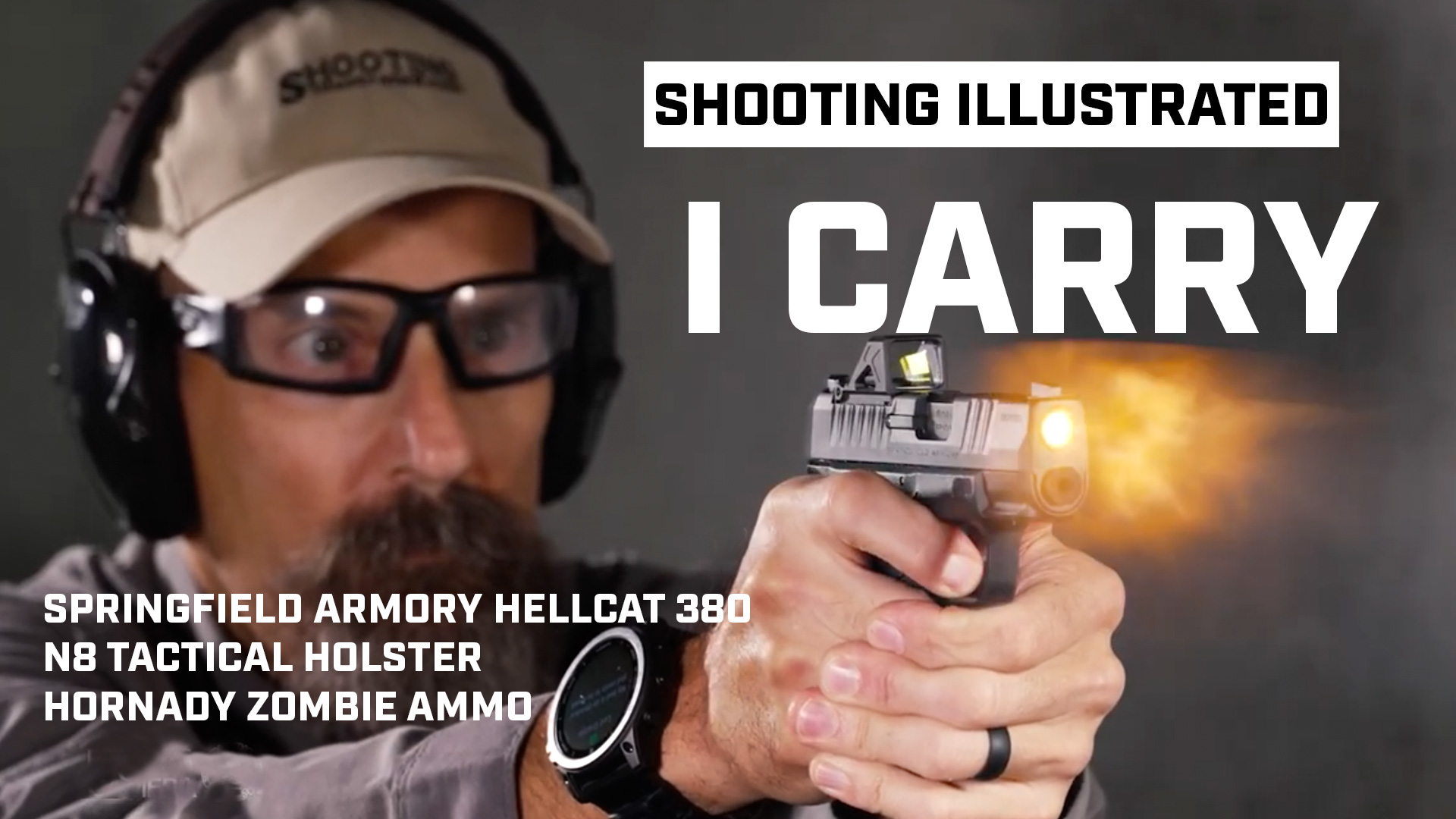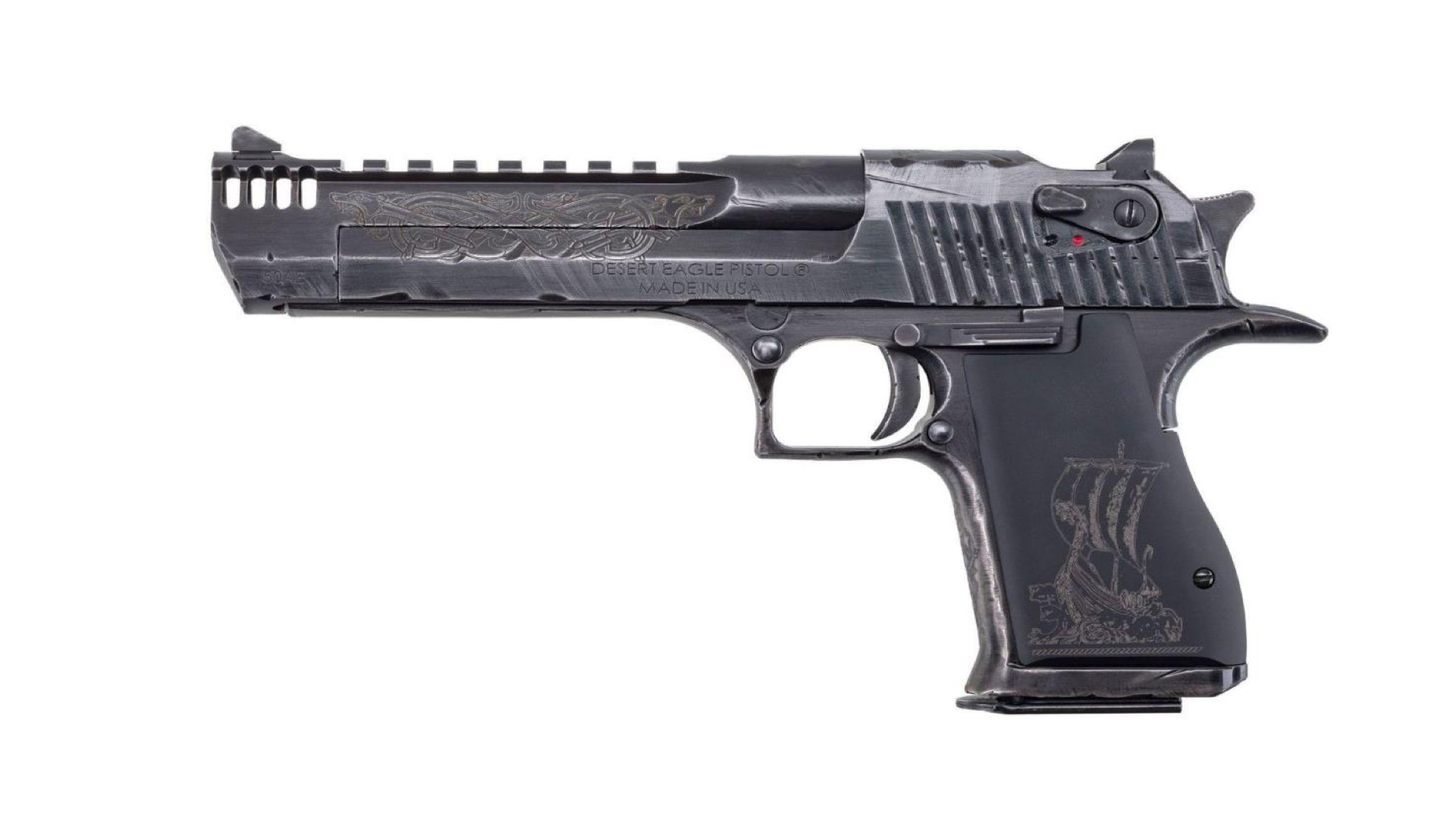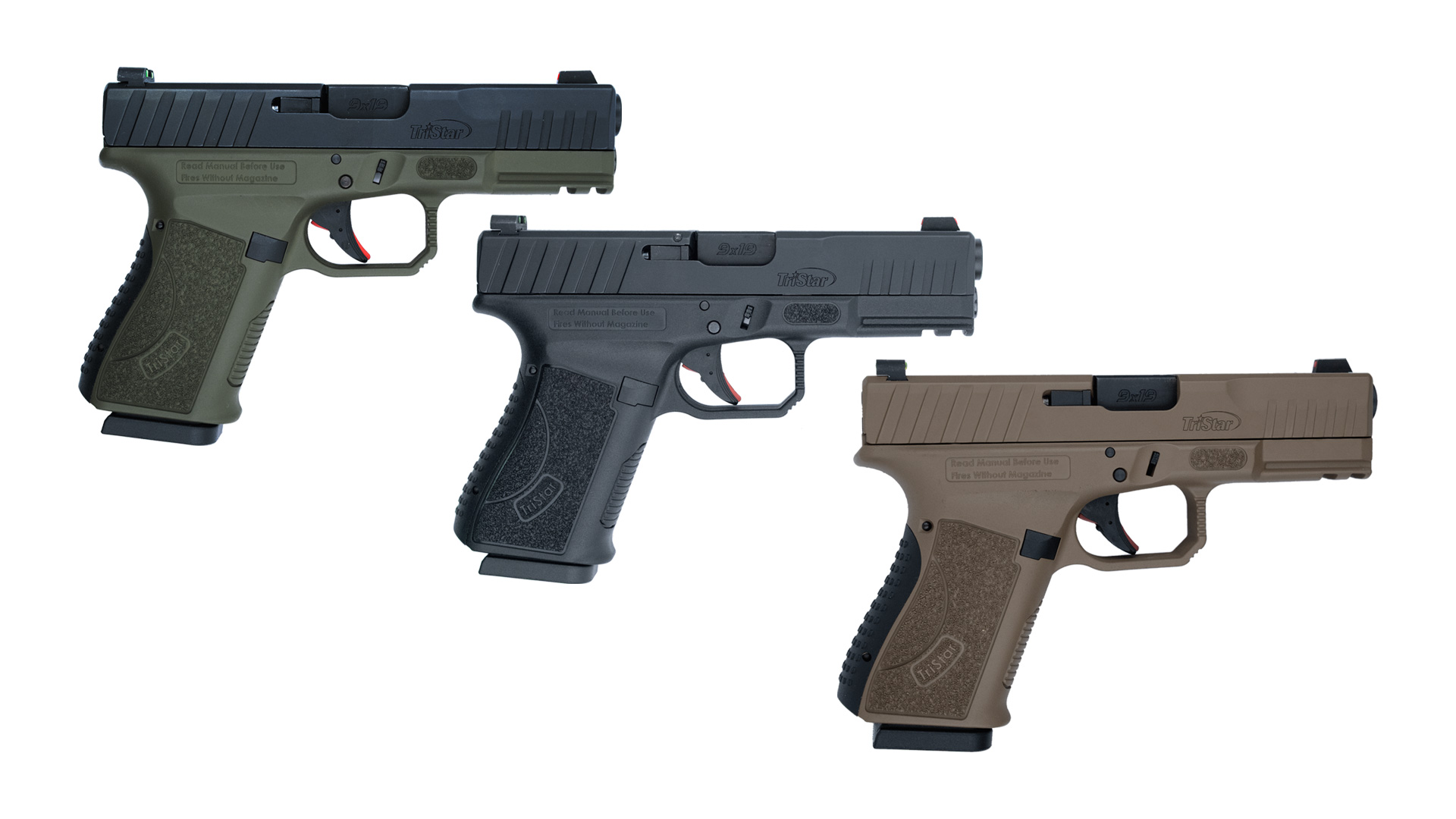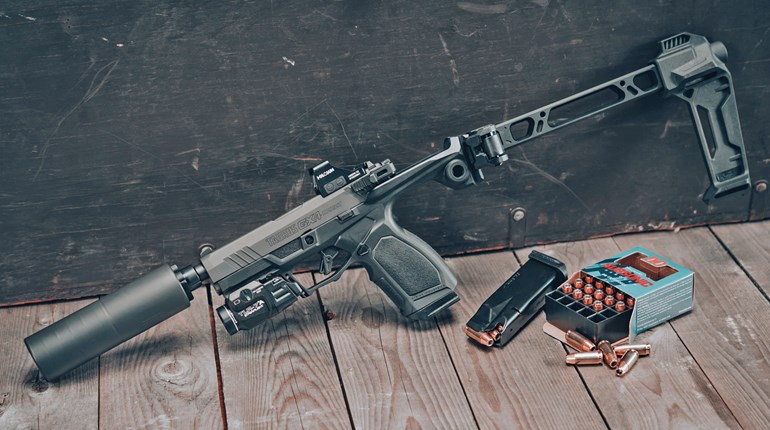
The debate over whether handguns in .22 WMR are adequate for self-defense has most likely been argued since the peppy little rimfire arrived on the scene more than 50 years ago. Proponents and detractors alike continue to study the question from all angles, but it basically comes down to this: The .22 WMR may be a far cry from the ideal personal-protection cartridge (if there is such a thing) unless the only gun you have within reach when your life is threatened happens to be chambered for it. At that point, the .22 WMR suddenly beats everything up to and including the .45 that's not in your hand.

What could possibly lead to such a dire situation? In a word, reality. We like to think we'll have our preferred carry gun with us when we're forced to defend ourselves against an attacker, and many of us make a decided effort to keep it within reach where legal. But when is the last time you strapped your 4-inch pistol to your belt before taking the trash to the curb? Or took it along on a fishing trip when you know you'll be standing waist-deep in water?
Despite popular thinking, reality can leave a whole lot to the imagination. We envision—and spend the bulk of our training time preparing for—warding off a threat by drawing from a strong-side holster and delivering rounds while standing on our feet. That scenario could certainly happen, but imagine being blindsided by a thug, knocked flat, breaking the wrist of your dominant hand during the fall to the sidewalk. The handgun riding inside the waistband, or even in the jacket pocket, on that side of your body is going to be tricky to get into action before the criminal can finish what he started.
Situations like these call for a handgun so small and convenient to carry, taking it along becomes as habitual as shutting the door behind you when stepping outside. A handgun that because of its shape and straightforward operation can be placed in a variety of locations about your body, where it's easily accessible with either hand. The Black Widow from North American Arms (NAA) has all those qualities, and yes, it's chambered in .22 WMR.
NAA, based in Provo, UT, has developed a devoted following during its four decades of making tiny handguns intended for in-a-serious-pinch self-defense. The company was formed in the 1970s to manufacture several revolvers designed by Dick Casull, of .454 Casull fame, after the original producer of these guns, Rocky Mountain Arms, folded. Since then, NAA's single-action mini-revolver line has grown to include dozens of models—varying mainly in finish, furniture and barrel length—in .22 Short, .22 LR and .22 WMR.
For certain, some of the company's variations on this theme are viewed as novelties more than anything else. Take, for example, the 1860 Earl, a 4-inch-barreled cap-and-ball revolver designed to mimic the blackpowder sidearms of the Old West, only downsized to .22 caliber. However, NAA President Sandy Chisholm will tell you many more of the mini-revolvers are expressly intended for personal protection. The Black Widow is one of the latter, and its features leave little room to argue that role. Chisholm freely admits the Black Widow (or any other NAA mini-revolver) is not intended to replace a centerfire handgun of a larger caliber. Rather, it should be viewed and carried as a complement, a backup gun. Its design excels in this function—and perhaps even a few more.
From a carry perspective, what the Black Widow has going for it is what it's lacking, namely size and weight. The revolver is just a bit more than 5.75 inches long and .75 inch wide across the grip. Much of its height comes from the rubber grips, which are purposely extended and bulbous to make them better fit the hand. The grips don't have to be that large, and on other NAA models, they're not. From the bottom of the trigger to the top of the hammer, the little revolver measures only about 1.75 inches and slims substantially as you move toward the muzzle. The frame and cylinder are stainless steel, but since there is so little of it, the Black Widow weighs less than 9 ounces.

Just as fitting, literally, for a backup gun is the Black Widow's shape. Its narrow frame lacks a trigger guard, and the trigger extends a mere .25 inch from its housing. Paired with a proper holster, the Black Widow is easy to slip inside a front pocket of a pair of jeans, which may not be an option with some so-called pocket pistols having a deeper profile. That same slenderness lends itself to inside-the-waistband carry in the appendix location.
While the revolver's frame makes it easy to tuck away, the grips help with getting it out in a hurry. The Black Widow's grip angle seems more open than what's normally found on most revolvers, which seems to facilitate obtaining a good purchase in the tight confines imposed by deep concealment. Two fairly deep scallops on the front of the grips match up with the middle and ring fingers, further aiding in control. The grips' rubber material has a slightly tacky quality, which also prevents your hand from slipping.
Safety is always a consideration when carrying any firearm, but with the tendency to place backup guns near the softer parts of the body, it becomes even more of a concern. The Black Widow addresses it with several features. First, this is a single-action revolver, meaning the gun won't fire until you manually cock the hammer and pull the trigger. While the blade-like striker is mounted on the hammer, you can safely carry the Black Widow with its five chambers fully loaded, thanks to a series of slots milled into the back rim of the cylinder. Lowering the hammer into one of these notches between the chambers locks it into place. Essentially, the hammer rests against the cylinder, not against the rim of a cartridge. Any force exerted on the hammer is transferred to the cylinder wall. Cocking the hammer to fire the gun frees the cylinder and aligns a chamber with the hammer blade. Finally, the hammer spur is covered in rows of neatly executed, deep serrations to help maintain control of it while cocking and decocking.
There are a couple drawbacks to the Black Widow. For one, like most single-action revolvers, it is painfully slow to load. Almost blackpowder slow. You must remove the cylinder pin, then the entire cylinder. Extraction comes by way of inserting the cylinder pin into each chamber mouth and "ramming" the cases out the back. Recharge the cylinder, roll it back into the frame, and replace the cylinder pin. The trick is getting the cylinder and the cylinder pin in the correct positions to allow reassembly.
I put close to 300 rounds through the Black Widow during testing, so I became intimately familiar with the reloading steps. At the end of my third range session, I timed myself. The fastest I could get the revolver reloaded was 30 seconds. My average time was 39 seconds, and this was under ideal conditions, meaning sitting at a bench that served as a stable worktop. The process is simple, but the steps involved make reloading the Black Widow almost impractical in a defensive situation unless you have substantial cover, excellent hand-eye coordination and nerves of steel. The solution: Make the first five rounds count.
The second negative is the sights, or more accurately, one of them. The size of the front sight is actually impressive for such a tiny gun. My complaint is directed toward the notch in the rear sight, which isn't nearly wide enough to accommodate its partner. It's so narrow that even under a bright sun, I can make out just the slightest hint of light around its edges, and I have corrected 20/20 vision. Indoors, I'm left with a solid black rectangle sitting on top of the barrel with little clue as to the alignment of the two components.
I realize the Black Widow is meant for close-range, point-and-shoot situations. I'd still like to be able to aim my gun if I had the time. The backup gun could very well become the primary gun in a fight, so I see no good reason to place unnecessary limitations on its effectiveness.
Luckily there's a fix for that, too. Aaron Moore, vice president of LaserLyte in Cottonwood, AZ, is one of those guys who derives much enjoyment from thinking outside the box. He's come to depend on NAA's mini-revolvers, and his business is laser sights, so he combined the two. The LaserLyte Venom is a trim unit that mounts beneath the Black Widow's barrel underlug and projects a red laser beam to establish point of aim. The Venom replaces the revolver's factory cylinder pin, requiring no gunsmithing to install. It locks into the notch on the underlug in the same manner as the original pin.
The Venom weighs less than .75 ounce and adds no width or length to the Black Widow. To turn it on, press the activation button that projects from its bottom surface. The laser has a constant-on and a pulse mode. Hold down the button for five seconds when the unit is on to switch between the two.
Given the Black Widow's purpose, and considering its iron sights are less than ideal, the Venom is a smart accessory. At the 10-yard line, the laser cut my group sizes by more than half. I was surprised to see that much improvement in accuracy, but it's only part of the unit's benefits. Another advantage with the Venom is you don't need to use the iron sights at all to get good hits. In addition, it's much faster to paint the target with the laser than to align the sights.
All of these aspects could improve your effectiveness with the Black Widow in a self-defense situation. Forced to shoot from an unconventional position, such as from your back or side, you may not be able to get any kind of sight picture at all with the irons. And in low light, or when a split second can change the outcome of an attack, the Venom can make all the difference.
The only thing about the Venom that I didn't like was the inability to adjust windage and elevation. It comes from LaserLyte already zeroed, and because of its tiny size, Moore said there isn't enough room in the unit to permit an adjustment system. At 10 yards, point of impact was about 2 inches to the right of point of aim.
Despite this shift, the Black Widow's accuracy impressed me, especially when I used the Venom to aim. From the bench at 10 yards, the revolver turned in several groups of less than 1 inch. I've shot pistols nearly twice its size that couldn't touch those groups. The only functional issues I encountered were four failures to fire, all from the same box of ammo that had been sitting on my shelf for more than a decade. I'll chalk those up to the cartridges, as I didn't have a single malfunction with the other loads during testing.
I have large hands, and it took some time to find the ideal firing grip for the Black Widow. The trigger is so small, the top of my index finger would sometimes drag against the bottom of the frame, making the pull weight seem heavy. Once I learned how to hold the gun, I realized the trigger was pretty good and quite crisp, having a pull weight of 4 pounds, 8 ounces as measured on a digital scale.
Recoil from the Black Widow was surprising. Not in the sense it was painful, but with regard to how much the gun shifted in my hands upon discharge. It was distinctly different than the way a small-frame rimfire revolver behaves, no doubt due to the Black Widow's reduced size and weight. Here again, when I concentrated on my grip, the gun settled down.
The NAA Black Widow with the LaserLyte Venom will serve well as a second—or even third—gun to go with whatever you happen to favor carrying as your primary. For recoil-sensitive shooters or those with tiny hands, it may even be the first choice. I can also see it pulling duty as a mini trail gun for camping, fishing and other outdoor pursuits. While I'm not giving up my Commander, lately I've found myself toting the Black Widow as well—just in case.
Specifications:
North American Arms Black Widow
Manufacturer: North American Arms; (800) 821-5783
Action Type: Single-action revolver
Caliber: .22 WMR
Capacity: 5 rounds
Frame: 17-4 pH stainless steel
Barrel Length: 2 inches
Rifling: 8 grooves; 1:12-inch RH twist
Grips: Rubber
Sights: Dovetailed rear notch and front blade
Trigger Pull Weight: 4 pounds, 8 ounces
Length: 5.88 inches
Width: .88 inch
Height: 3.63 inches
Weight: 8.8 ounces
Accessories: Hard case with lock, manual
MSRP: $274
LaserLyte Venom
Manufacturer: LaserLyte; (928) 649-3201
Output: Class IIIA, 5 mw red laser
Modes: Constant on, pulse
Batteries: 4 type 377, 1.5 volt silver oxide
Battery Life: 5 hours, constant on; 10 hours, pulse
Body: 6061 T6 aluminum
Length: 1.86 inches
Width: .41 inch
Height: .39 inch
Weight: .63 ounce
MSRP: $159.95
Shooting Results:
| Load | Velocity | Group Size | ||
| Smallest | Largest | Average | ||
| CCI Maxi Mag 40-grain JHP | 1,071 | .63 | 1.51 | 1.14 |
| Hornady Critical Defense 45-grain FTX | 1,037 | .99 | 1.46 | 1.23 |
| Remington 40-grain JHP | 1,052 | .99 | 1.38 | 1.19 |
| Winchester Varmint LF 28-grain JHP | 1,333 | .72 | 1.49 | 1.26 |
Velocity measured in fps at the muzzle for 10 consecutive shots with an Oehler Model 36 chronograph.Temperature: 72 degrees Fahrenheit. Accuracy measured in inches for five consecutive, five-shot groups at 10 yards from a sandbag rest, using the LaserLyte Venom laser.
